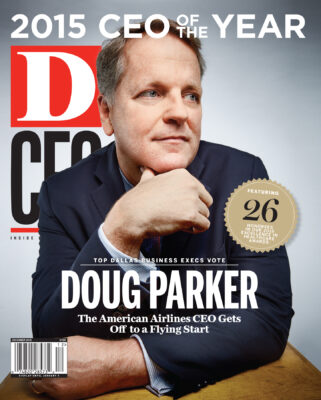Last year, in introducing D CEO’s inaugural Excellence in Healthcare awards, we highlighted the economic impact of healthcare on North Texas. It’s a $52 billion industry that accounts for close to 600,000 jobs throughout the region. But it’s also a field whose benefits can’t be conveyed by just the numbers; it’s made up of men and women whose work often has life-or-death implications. Produced in concert with our industry news site D Healthcare Daily, this year’s Excellence in Healthcare program honors 15 finalists and winners in 10 categories, selected by the editors from more than 100 nominations. From the business deals to the volunteers to the practitioners and the researchers, we are pleased to tell you about the standouts in North Texas healthcare.
Outstanding Healthcare Executive
Barclay Berdan
CEO, Texas Health Resources
When Barclay Berdan became CEO of the nonprofit giant Texas Health Resources, he was just the second person to hold that position. He spent years as chief operating officer and the No. 2 to Doug Hawthorne, the man who orchestrated a merger between health systems based in Dallas and Tarrant counties. Berdan had big shoes to fill, and two dozen hospitals to oversee. But 25 days into his tenure, unbeknownst to the staff of the emergency room of Presbyterian Dallas, Ebola had been hiding inside a patient who would be misdiagnosed with sinusitis and sent home. He returned when symptoms worsened. Over the course of treating Thomas Eric Duncan, two nurses would become infected with the virus. Berdan was now leading a system that was ground zero for the country’s first case of Ebola.
Along with his leadership team, he launched an internal investigation to figure out the errors—from triage to the electronic health record to communication—and areas that could be improved. He then shared these so-called “learnings” with hospitals across the nation. He also commissioned an independent study led by Mayo Clinic CEO Dr. Denis Cortes. It placed the blame at the feet of Presbyterian. Instead of deflecting, Berdan welcomed the report and its findings, making public vows to improve.
Scary public health threat or not, business continues. And about a year later, Berdan joined UT Southwestern Medical Center President Dr. Daniel Podolsky to announce an alliance called Southwestern Health Resources. It’s still in development, but a goal is to link Texas Health’s clinical volumes (it sees more patients than any health system in North Texas) with UT Southwestern’s research initiatives.
Hawthorne’s merger was a carefully placed bet on the future, that the system would need to be bigger to remain competitive. Berdan has strategically taken the next step—using the patient volumes created by the merger to reach more North Texans while researching ways to improve the health of populations.
—Matt Goodman
Finalists:
Christopher Durovich, Children’s Health System of Texas
Dr. Bruce Meyer, UT Southwestern Medical Center
Achievement in Medical Research
Ajay Goel
Director of the Centers for Gastrointestinal Research and Epigenetics, Cancer, and Cancer Prevention, Baylor Research Institute
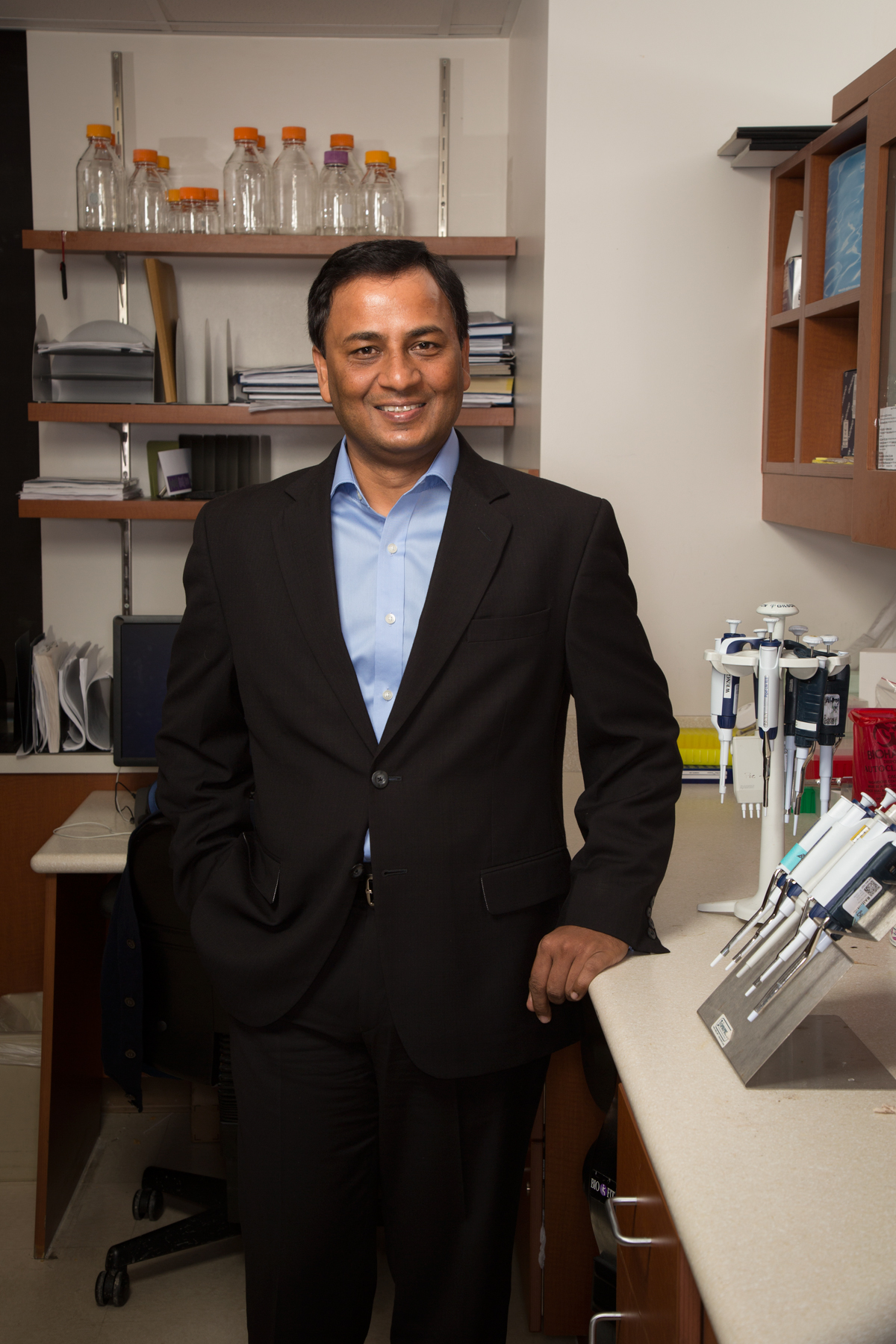
Dr. Ajay Goel, director of the Center for Gastrointestinal Cancer Research and for Epigenetics and Cancer Prevention at the Baylor Research Institute, has made this the target of his career. And earlier this year, he uncovered a strand of microRNA unique to colorectal cancer that could tip off doctors to its development and its chances of spreading to other organs. The study, published in The Journal of the National Cancer Institute, points to oncologists having more information at their disposal for developing treatment regimens. Now, Goel has set about finding biomarkers that would give oncologists even more insight into how far a tumor will likely progress.
Why this could be so impactful is simple: Colorectal cancer is now our third most common, behind lung and breast. And when it spreads to other organs, studies have found that its survival rate hovers around just 35 percent. Goel and his team, clearly, have a major opportunity to save lives. —M.G.
Finalist:
Lora Hooper, UT Southwestern Medical Center
Achievement in Community Outreach
Diabetes Health and Wellness Institute, Baylor Scott & White Health—North Texas
In 2010, Baylor Scott & White Health opened the Diabetes Health and Wellness Institute in the Frazier Courts community in South Dallas. The low-income area suffers from high unemployment, a lack of health insurance, and inadequate healthcare—and also has one of the highest incidences of diabetes in the entire state of Texas.
DHWI provides healthcare, wellness classes, and diabetes management and prevention programs to the community at the Juanita J. Craft Recreation Center. The one-of-a-kind resource has both the potential to save lives and the opportunity to educate the public on the importance of health and wellness.
In the last five years, DHWI has enrolled more than 4,000 people in its programs and classes. And, as of May, it has seen 17 percent fewer emergency room visits and 37 percent fewer hospital stays among those individuals. In addition, 40 percent of those diagnosed with diabetes achieved optimal hemoglobin of less than 7 percent. Improvement in blood pressure and cholesterol were also noted among DHWI members.
It’s not just about the numbers, though; DHWI has changed the fabric of the community and is a driving force in connecting residents through health and wellness. DHWI members have access to basketball courts, baseball and football fields, and a 22-acre park with walking trails. Kick-boxing, yoga, and cooking classes are offered. DHWI also hosts a weekly farmers market stand that offers fresh fruit and vegetables at low cost to community residents. And more than 1,000 people attend the annual Health Harvest Fun Walk/5K Run, which helps bring residents together to raise awareness for the facility.
Following its success, several leading medical institutions are now studying the DHWI model—including the Johnson & Johnson Diabetes Institute. In 2012, DHWI became the second training site in the nation for the program.
—Lauren DeLozier
Finalists:
Parkland Injury Prevention Center
UT Southwestern National Cancer Institute
Achievement in Medical Devices/Technology
ZeOmega
You could call ZeOmega co-founder Sathya “Sam” Rangaswamy a healthcare industry wildcatter. That’s because he and his wife, Nandini, co-founded the population health solutions provider in 2001 on the forefront of a large-scale economic downturn that would snowball into the Great Recession.
ZeOmega also presented the idea of streamlining workflows and lowering healthcare costs long before the Affordable Care Act. Today, the company serves more than 30 million patients and 2,500 providers in 59 hospitals across the country.
Rangaswamy credits ZeOmega’s consistent growth to its flagship product, called Jiva. It’s a scalable platform for population health management that helps healthcare organizations with tasks like managing multiple lines of business in one place. It has made improvements to care quality, cost, and patient satisfaction for healthcare organizations that employ it, plus a reported $6.5 million in annual savings and $3.7 million in administrative cost savings. Jiva helps providers incorporate detailed patient information into custom-tailored treatments and care management plans while also driving patient engagement.
Last year, ZeOmega moved from Frisco to a 31,000-square-foot building in Plano. It has also grown its Dallas-area staff from 70 to around 140 since 2011 and employs more than 500 people worldwide.
—Hilary Lau
Finalists:
Mend, AccelSPINE
Achievement in Wellness Programs
Wally Gomaa
CEO, Naturally Slim, ACAP Health Consulting
Today, nearly 155 million adults in the U.S. are considered overweight or obese, due largely to unhealthy lifestyles and modern diets. Obesity can lead to diseases like diabetes, heart disease, stroke, and cancer. The prevalence of diabetes alone has increased by 159 percent in the past 15 years, and that number is only expected to grow. ACAP Health Consulting wants to change this trend by outfitting organizations with the tools they need to truly make an impact.
One of those tools is Naturally Slim, a nationally recognized weight-loss and behavior modification program that has been clinically proven to help patients reduce their metabolic syndrome risk. So far, Dallas-based organizations including Southwest Airlines, Baylor Scott & White Health, Atmos Energy, and Brinker International have reported positive results with the program on behalf of their participating employees. (To date, more than 650 companies have participated in Naturally Slim.)
The online program starts with 10 weeks of skill building focused on behavior modification, not dieting. After the first 10 weeks, participants receive one full year of ongoing support to ensure the learned skills deliver sustainable and consistent results. The employee wellness model includes incentive-based weight-loss programs.
On average, Naturally Slim participants lose 5 percent of their body weight, and also reverse their metabolic syndrome—not to mention the drop in blood pressure, glucose, and cholesterol that many participants also observe. The Naturally Slim curriculum focuses not on strict dieting but on mindful eating and behavioral changes—a philosophy that can be conducive to any lifestyle.
—L.D.
Finalist:
Mobile Cancer Survivor Clinic
Achievement in Healthcare Innovation
Baylor Research Institute at Dallas + Translational Genomics Research Institute
It’s becoming increasingly clear to both medical industry insiders and outsiders that there will never be a “magic pill” that cures cancer. But researchers at Baylor Research Institute at Dallas and the Phoenix-based Translational Genomics Research Institute (TGen) still believe in a relatively simple solution for a very complex disease. That’s why they joined forces in May 2015, aiming to find innovative ways to accelerate early detection of cancers and personalize treatments for patients with various forms of the disease. The goal is so-called “precision medicine,” to which the National Institutes of Health has allocated more than $200 million in funding for research grants.
Baylor and TGen hope to focus their initial research on three areas: women’s cancer, which includes breast and gynecological; abdominal malignancies, which includes pancreatic, colorectal, and liver; and hematological cancer, which includes leukemia, lymphoma, and multiple myeloma.
Both of the partners bring unique strengths to the table. TGen is widely considered one of the country’s top cancer research institutes, thanks to its advanced genomic sequencing technology and expertise in proteomics, while the Baylor Research Institute boasts strong expertise in metabolomics and immune-based approaches to research. The partners will collaborate across these various areas, offering liquid biopsies, performing gene sequencing, conducting unique clinical trials, and creating personalized vaccines for Baylor Scott & White Health’s patients.
The partnership’s operations are based at Baylor University Medical Center at Dallas’ Sammons Care Center, while research is being conducted in clinics and labs throughout the Baylor Scott & White Health system and at TGen facilities in Scottsdale and Phoenix. In the future, the venture hopes to expand its research efforts to other areas like diabetes; neurology; and infectious, cardiovascular, and metabolic diseases. —H.L.
Finalists:
DME Exchange
Madhukar Trivedi, UT Southwestern Medical Center
Outstanding Medical Real Estate Project
Parkland
The first thing you notice about Parkland Health & Hospital System’s new $1.3 billion hospital is its size. It is, after all, the safety net hospital for the nation’s ninth most populous county; it should be visible.
It’s a monolith—862 beds spread over 2.8 million square feet on 17 floors. It was designed by HDR and Corgan and built by joint venture team BARA, which included Balfour Beatty, Austin Commercial, H.J. Russell & Co., and Azteca Enterprises, and about $80 million was spent solely on digital technology. Patients lie on smart beds that weigh them and monitor whether they’re actually in the bed. Patient information is hosted on a screen outside the door for caregivers. Babies are monitored via a device attached to their umbilical cords. Patients use smart TVs to order food that’s been integrated with their dietary limitations.
These are all exciting upgrades, but it’s important to frame this achievement in the context of what it replaced. Parkland’s old hospital, built in 1954, was almost literally falling apart. The county’s sizable uninsured and underserved population didn’t just get a new hospital. They got one that’s among the most advanced in the nation. —M.G.
Finalist:
Baylor Scott & White Medical Center—Waxahachie
Outstanding Healthcare Volunteer
Janan Weeks
Baylor Regional Medical Center at Grapevine
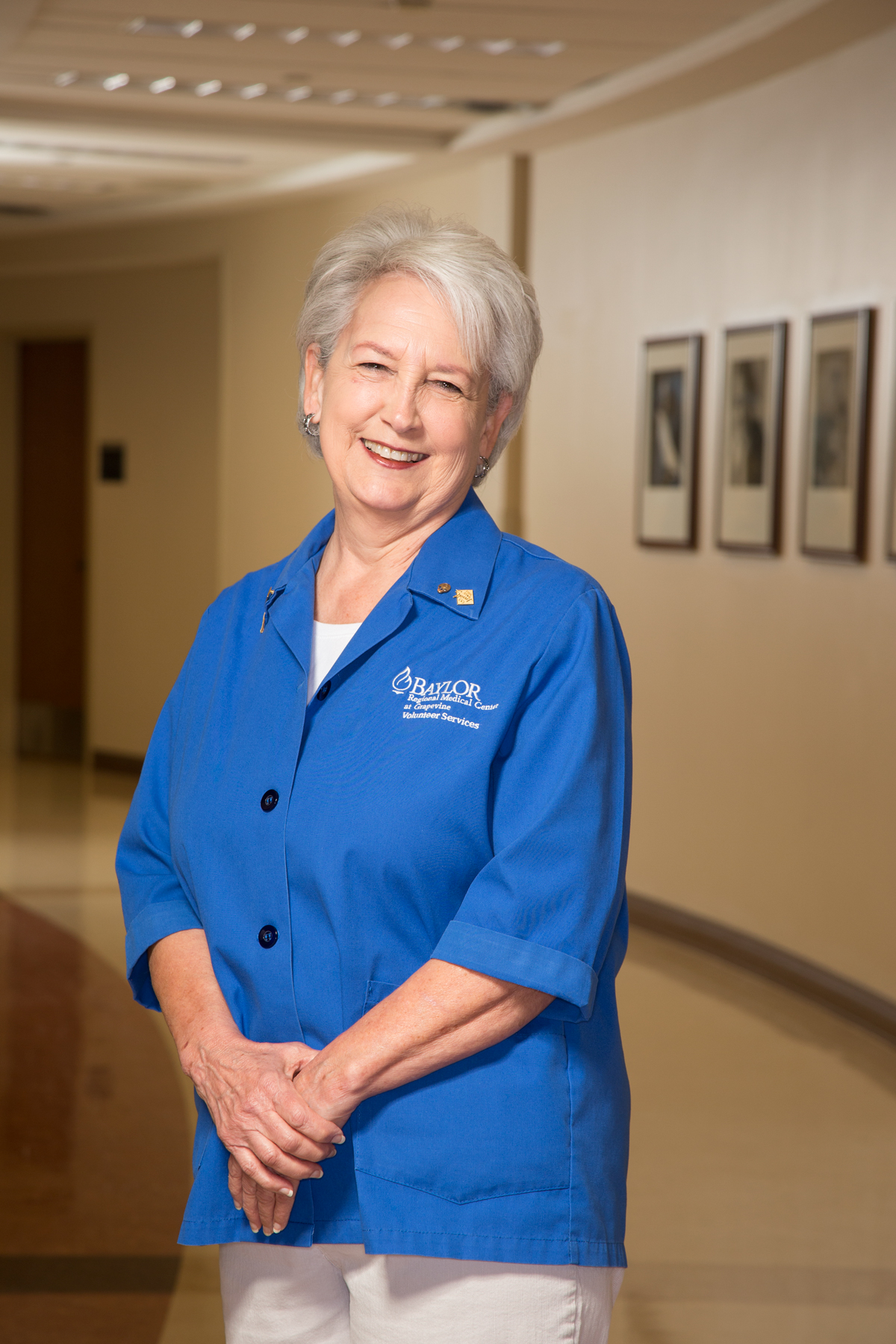
Since then, Weeks has clocked more than 2,650 volunteer hours. She works in the surgery waiting room, where she makes sure families and friends of patients have what they need—whether that be a shoulder to cry on or a medical update. Having first-hand experience caring for someone who is critically ill has given Weeks the ability to truly empathize with patients during some of their hardest moments.
Weeks also volunteers in guest relations, where she trains new volunteers, assists patients and visitors within the hospital, and delivers flowers and gifts. Whatever the task at hand, Weeks eagerly does it with a smile.
Outside of her day-to-day volunteer duties, Weeks participates in the hospital’s “random acts of kindness” initiative, which gifts staff members with small tokens of appreciation. She’s also serving her fifth year as secretary of the volunteer board of directors. —L.D.
Finalists:
Stephen Apple, Texas Scottish Rite Hospital for Children
Lisa Barker, Southwest Transplant Alliance
Outstanding Healthcare Practitioner
Gonzalo Gonzalez-Stawinski
Chief of Heart Transplantation and Mechanical Circulatory Support, Baylor University Medical Center at Dallas
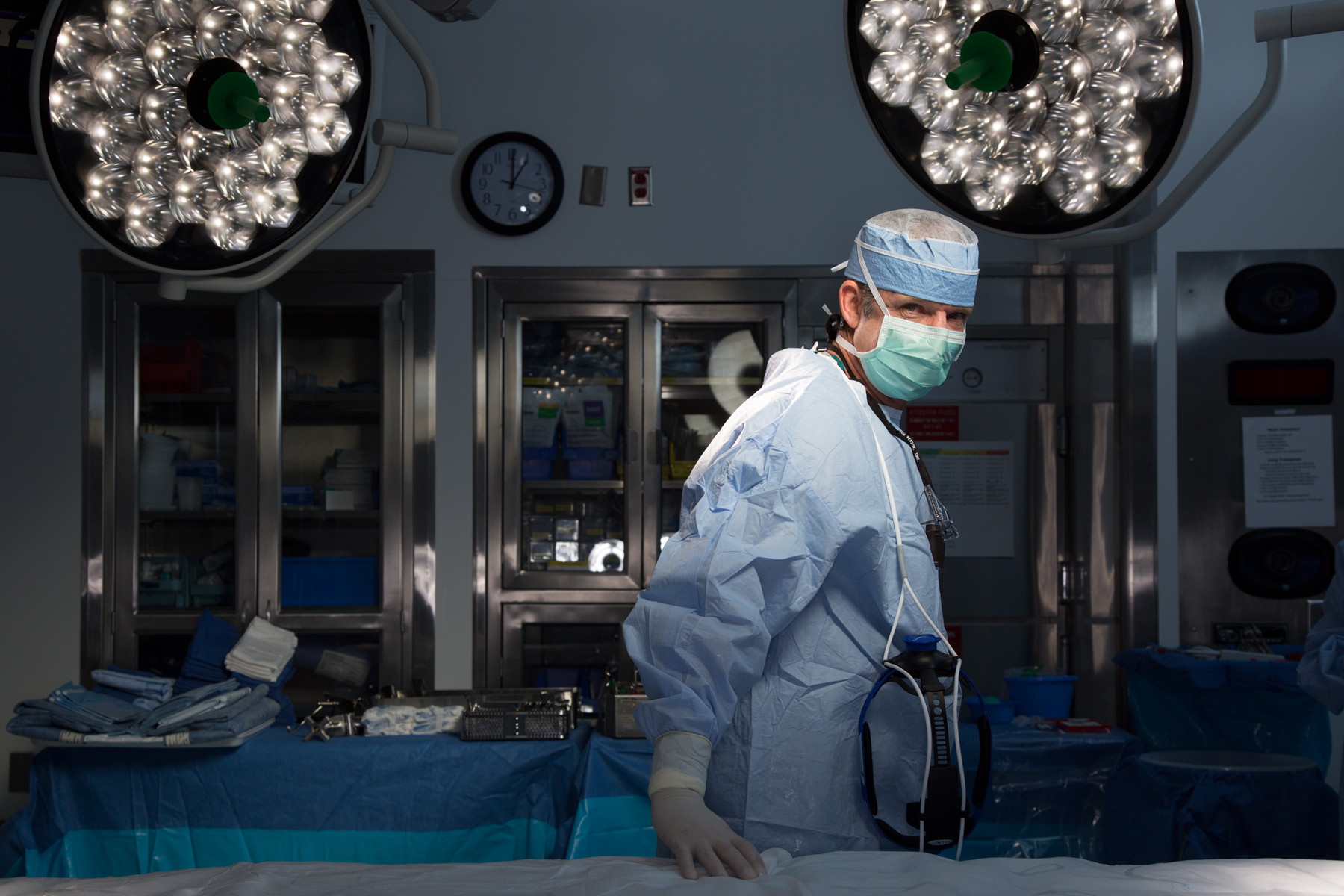
In 2014, the center did more transplants—101—than any other program in the country except for Cedars Sinai Medical Center in Los Angeles, which did 120. In 2011, the year before Gonzo arrived, Baylor did 30. Part of his achievements come from confidence. Another part is about going places where others won’t. The heart has roughly four hours out of the body before its cells start dying and transplantation becomes a serious risk. Gonzo pushed Baylor’s mile limits and started going a little further to procure organs. These trips took them to Puerto Rico and southern Florida. “Everything changed when we did 23 in six weeks,” he says.
From then on, the gas pedal was on the floor. Gonzo got more staff to help ease the volume. He doesn’t have to sleep on the couch in his office anymore, or at least not as often. And more people are getting hearts. Recently, at about 2 a.m. on a Tuesday, he successfully transplanted a heart and went out to share the news with the family. He didn’t have to say the first words. “We’re good,” the woman said, her tone of voice only hinting at a question.
“Yeah,” Gonzo replied, “We’re good.” —M.G.
Finalist:
Larry Anderson, UT Southwestern Medical Center
Outstanding Healthcare Deal
Tenet Healthcare Corp.’s Joint Venture with United Surgical Partners International
In June 2015, Tenet Healthcare Corp. announced that it would be joining forces with United Surgical Partners International to create the largest ambulatory surgery center (ASC) platform in the United States. The deal combined the assets of Tenet and USPI, resulting in more than 250 ASCs, 18 short-stay surgical hospitals, and 20 imaging centers across 29 states.
With the changing model of healthcare delivery, this joint venture puts both Tenet and USPI in a position to capitalize on a consumer-centric approach. USPI was an attractive partner to Tenet in part because of its novel three-way partnership model, which created an unprecedented network of 50 not-for-profit partners and 3,500 physicians. Tenet achieved a 50.1 percent stake of the USPI joint venture through a combination of cash and contribution of its own assets, with the remainder of the company held by private equity firm Welsh, Carson, Anderson and Stowe and other existing investors. Tenet sees an “attractive path to full ownership” of USPI by 2020.
The venture also strengthens Tenet’s outpatient services network, which jumped from 63 facilities in 2008 to 127 facilities in 2013. With the addition of USPI, the network now includes 440 outpatient facilities.
This is hardly the only recent joint venture for Tenet, which has been focused on forming relationships with reputable not-for-profit health systems sharing its principles of high-quality, low-cost care. It has also recently announced partnerships with Baptist Health System in Birmingham, Ala.; Dignity Health and Ascension for the Carondelet Health Network in Tucson, Ariz.; and Baylor Scott & White Health in Dallas. —H.L.
Finalist:
Children’s Health System of Texas’ acquisition of Our Children’s House
Lifetime Achievement Award
Donald Seldin
Professor in Internal Medicine, William Buchanan Chair in Internal Medicine, UT Southwestern Medical Center
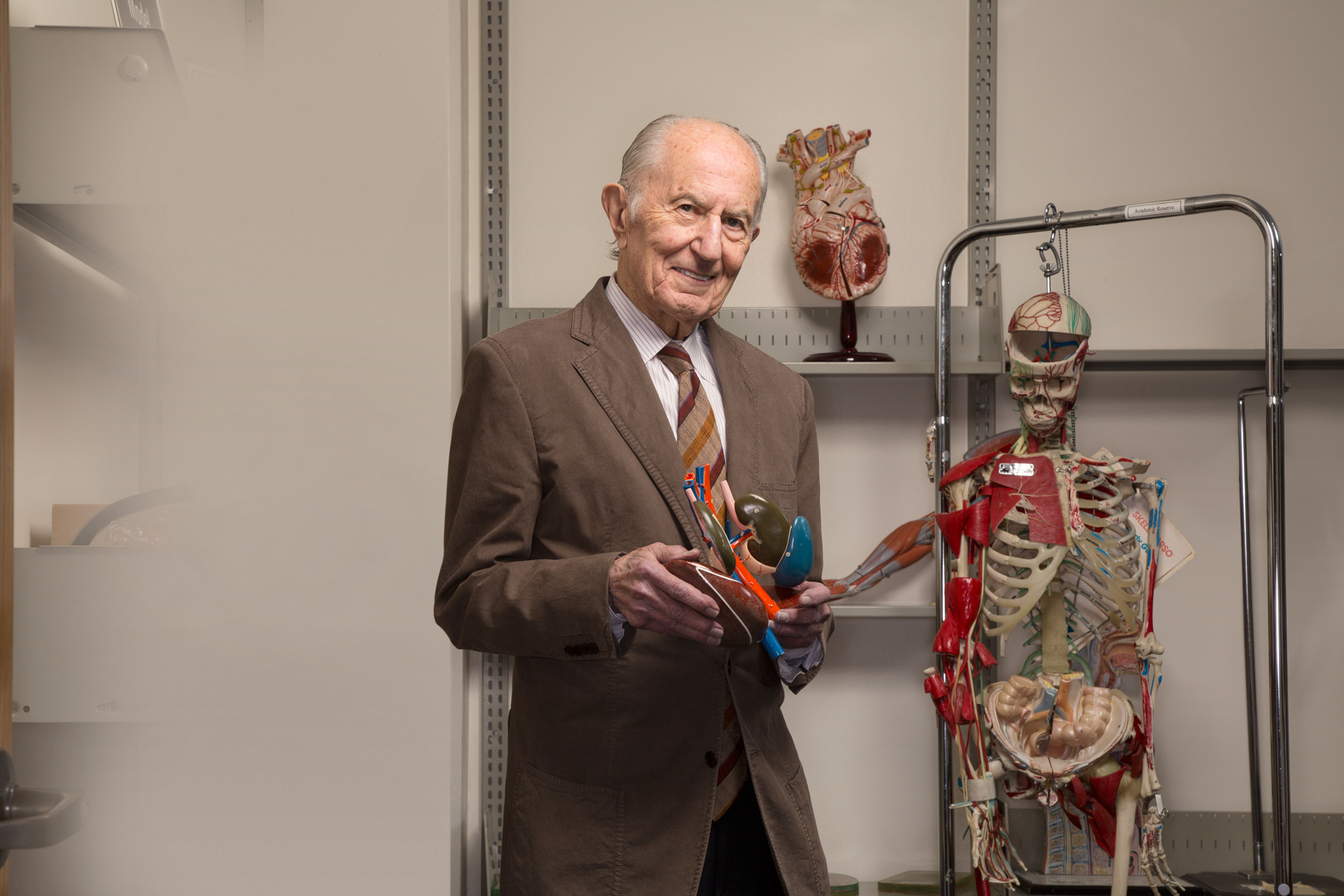
Seldin came to Dallas in 1951, recruited away from Yale University to an 8-year-old medical school made up of converted Army barracks. Seldin remained at UT Southwestern for the next six decades, spending 36 years as chairman of the Department of Internal Medicine. He’s racked up an impressive number of recognitions: He was UTSW’s first inductee into the American Academy of Arts and Sciences, The American Society for Clinical Investigation has named a research grant after him, the Texas Medical Association this year recognized him with its highest award.
But perhaps most impactful is his footprint upon UT Southwestern. He’s credited with creating a culture where researchers and doctors and students can freely explore and experiment without worrying about waiting for their turn to come. They’re encouraged to develop ideas, which is a major boon for recruiting efforts.
Seldin came to the university less than a decade after its creation. He had a blank template. Now it’s filled in—and it extends far, far beyond Dallas’ Medical District. —M.G.



